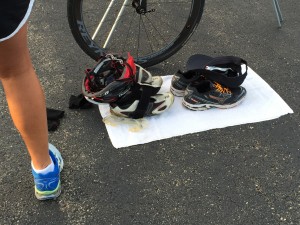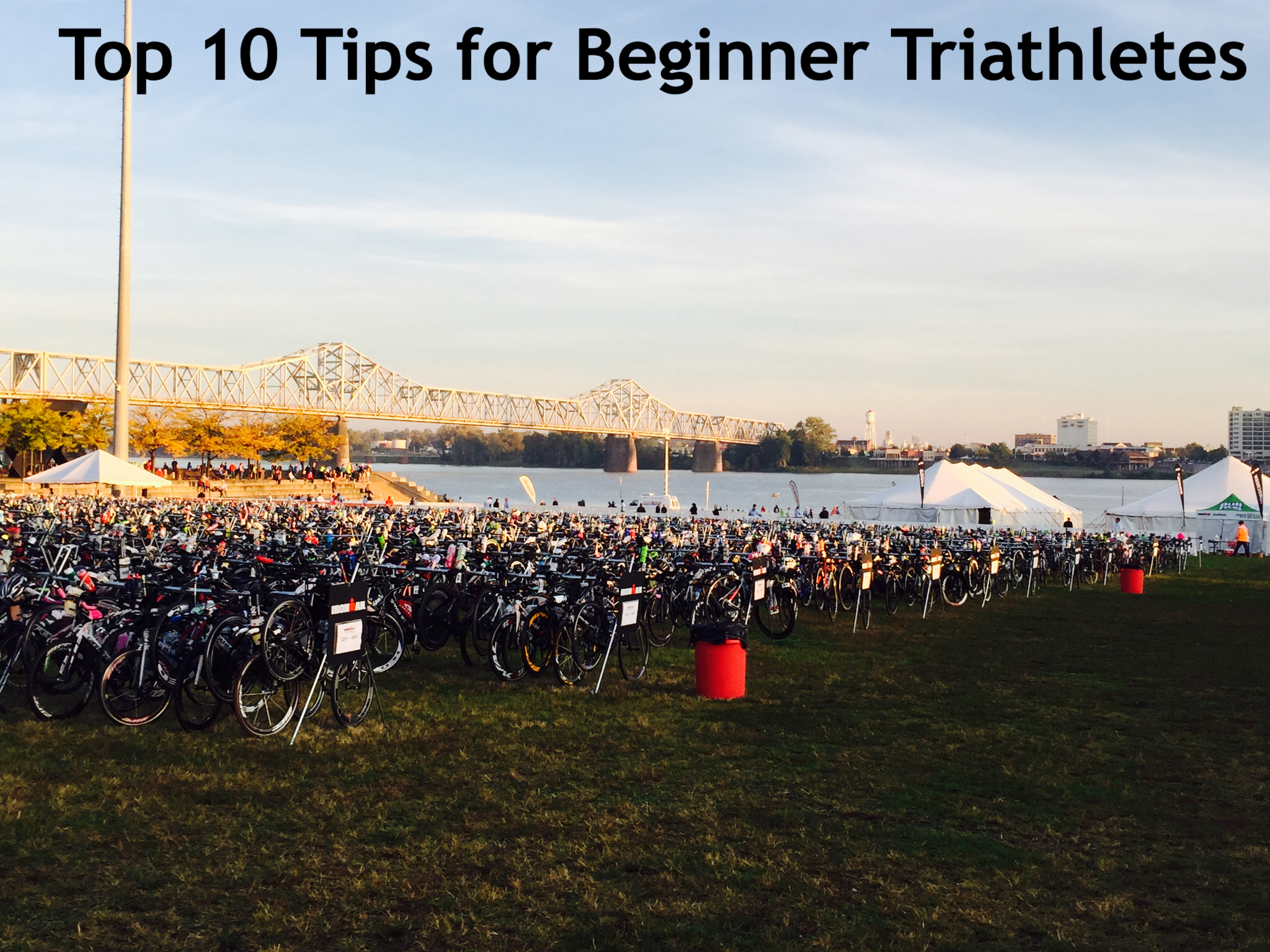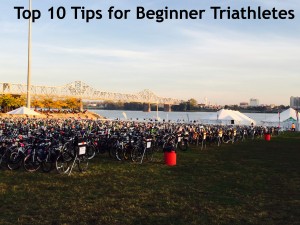So you’ve decided to enter your first triathlon. Congratulations! You are now doing something that the majority of people either will not, can not, or have no idea what a triathlon is. Let’s start with the basics and give you the Top 10 Tips for Beginner Triathletes:
10. Know the Rules: Triathlon has a special set of rules that everyone is expected to follow, whether they were told to you or not. Something as simple as dropping a gel wrapper on the course is enough to earn you a penalty. To review the list of most common violations, check out the USAT (USA Triathlon) website here: Most Common Rules Violations.
9. Transition Time Counts: The time it takes you to “transition” from swim to bike and bike to run is
still counted in your race time! So although transitions are not counted formally as one of the disciplines in the race, that is valuable race time and can definitely cost you a lot if you do not practice this ahead of time.
8. Practice Running after Biking: Most commonly referred to as a “brick”, practice running immediately after a bike workout. The bike uses different muscles than the run and the legs oftentimes feel like “jello” immediately after a tough bike session. By doing this several times in practice, you can get used to the feeling and know what to expect on race day.
7. Learn to Tread Water: Some races are a running start where everyone lines up on the beach and
runs in at the start, yet others are an “in-water” start where athletes may tread water for several minutes. Practice treading water in the event your race starts that way, and even if it doesn’t, treading water is an excellent skill to have. It is an essential skill to have in the event you need to stop and catch your breath mid-swim.
6. Body Glide is Your Friend: Chafing is no one’s friend and it’s the last thing you want on race day. Invest in some sort of body glide and put it on your ankles to help the wetsuit go on easier, on your neck to prevent chafing from the wetsuit, around the edges of your tri top and even on the insides of your arms where your arm passes the body during the run, and wherever else there might be some friction.
5. Transition Packing: Less is More: Of course you need to set up your things in the transition area, but it is not necessary to bring everything but the kitchen sink! In most cases, transition areas are very cramped and bringing a ton of stuff not only impedes your ability to transition quickly, it can also inhibit the transitioning of other athletes. As a rule of thumb, bring only what you need into transition and nothing more.
things in the transition area, but it is not necessary to bring everything but the kitchen sink! In most cases, transition areas are very cramped and bringing a ton of stuff not only impedes your ability to transition quickly, it can also inhibit the transitioning of other athletes. As a rule of thumb, bring only what you need into transition and nothing more.
4. The Zipper of the Wetsuit Goes in the Back: It might make sense to think that the zipper wetsuit goes in front. After all, it sure does make it easier to zip up! However, ALL wetsuit manufacturers design the wetsuits to zip up in the back. Can’t reach the zipper to zip it up yourself? Ask another triathlete to help. Triathletes are friendly folks who will gladly help you out if asked.
3. Know Your Transition Spot: Once you go in and set up your transition, do a few “walk throughs”. This means go to the swim “in” and pretend you are coming in from the swim and are going to look for your bike. Take note of the number of rows over and number of racks deep your bike is positioned. Look for landmarks or other things that will help you locate your bike upon entering from the swim. Do the same thing from “bike in” because the placement of the “in”s is different, so it is likely you will be coming in from an entirely different place within the transition area. Word of caution: DO NOT use things like someone else’s bike or a garbage can to help you spot your transition area as those things might not be there when you come back.
2. Concern Yourself With YOUR Race (not your family and friends who come to spectate):
We’ve all been there – had someone come to watch a race only to worry about things like, “Will they know how to get from point A to point B?”, “Do they know where to park?”, “Will they be bored?” This is your race so try not to worry about your spectator supporters – they will figure it out. Just focus on the race you came to do.
1. Have FUN Out There! Triathlon is an amazing sport made up of 3 other sports and can be tough, challenging, exhilarating, and lots of fun. Remember why you got into the sport and enjoy every minute you can out on the course. You are doing something that a very small percentage of people are even willing to try. You got this!












